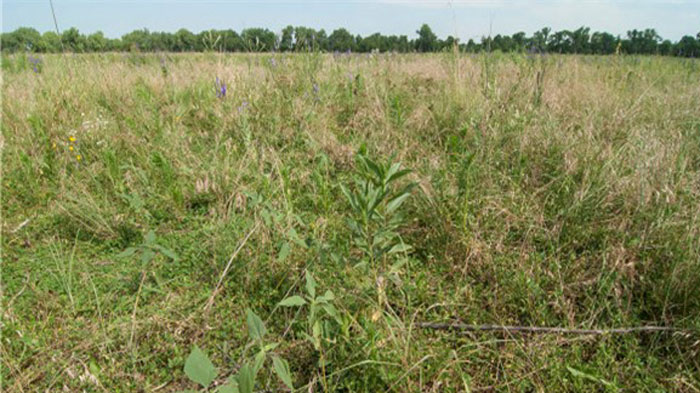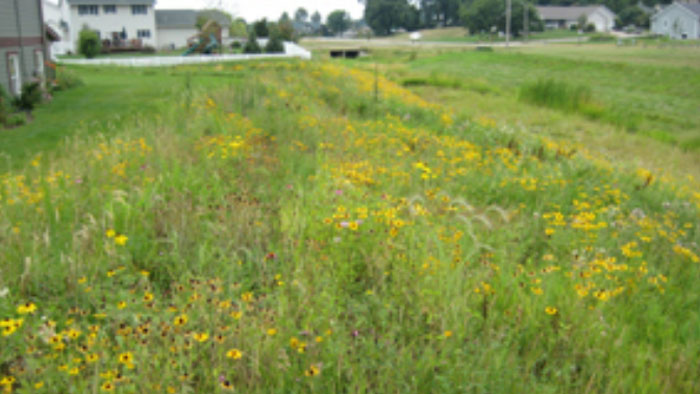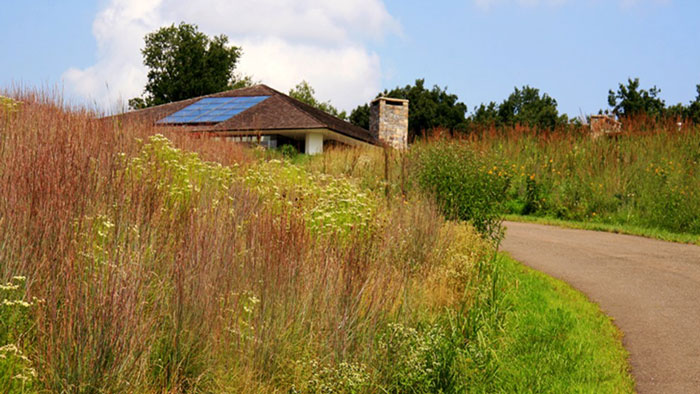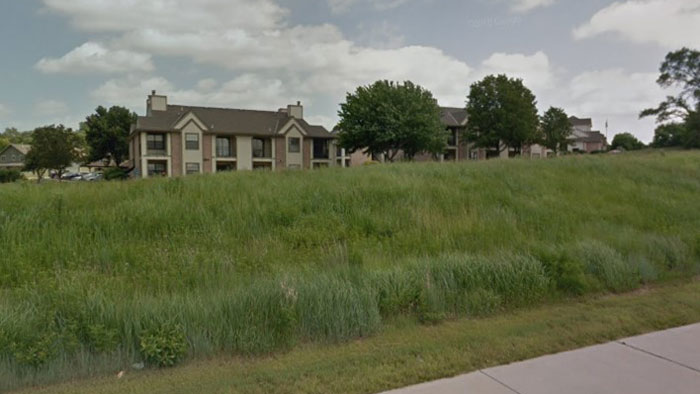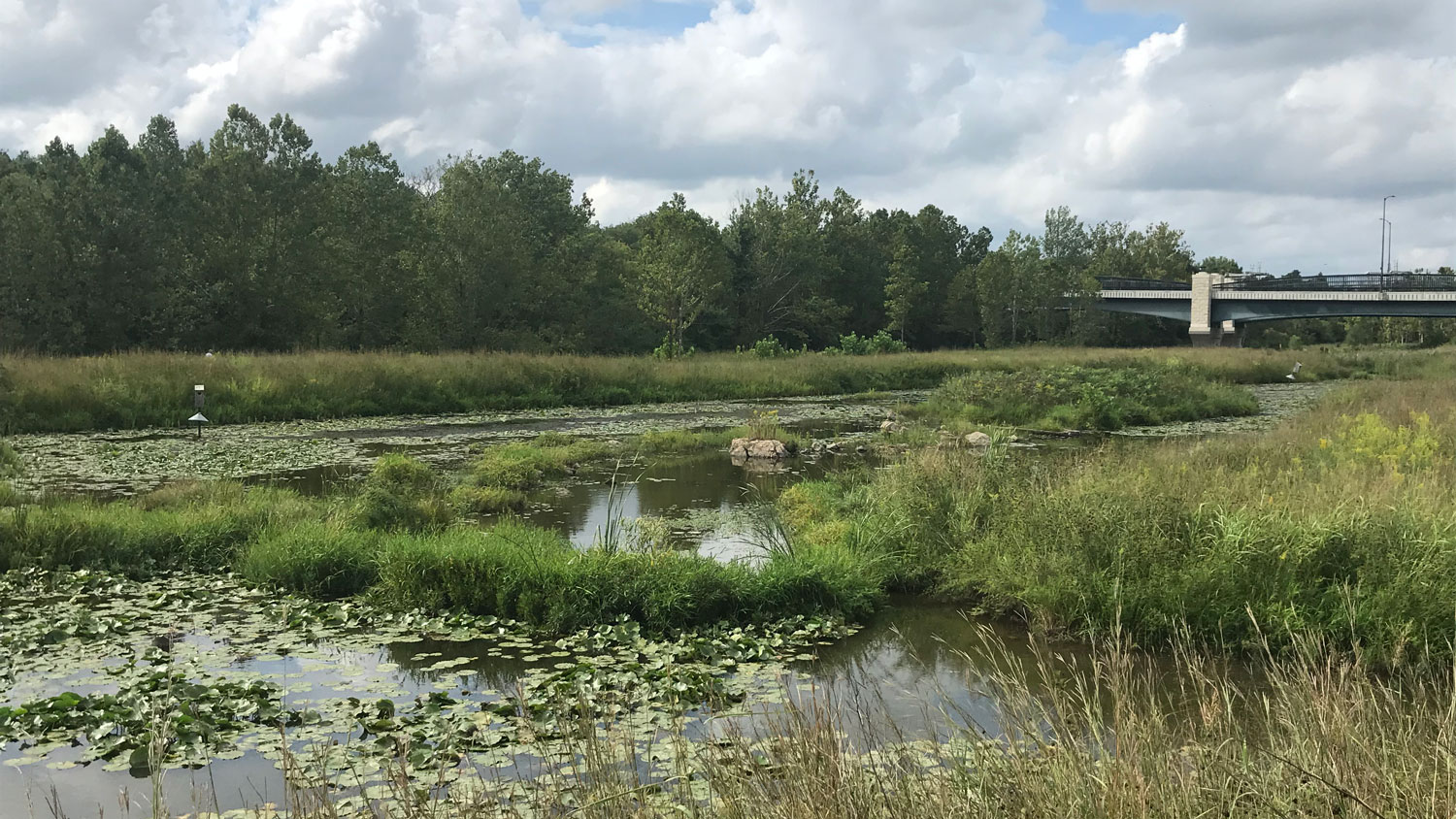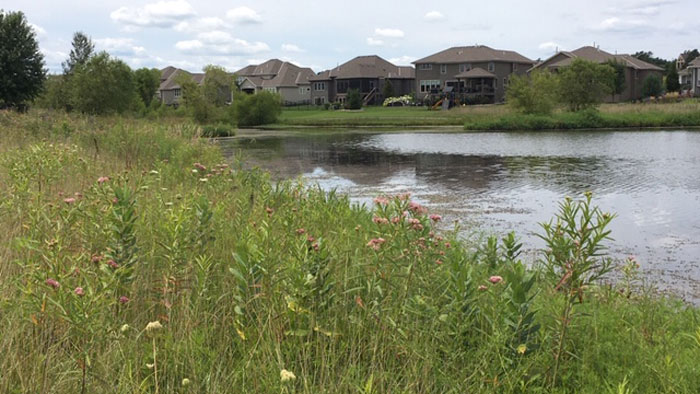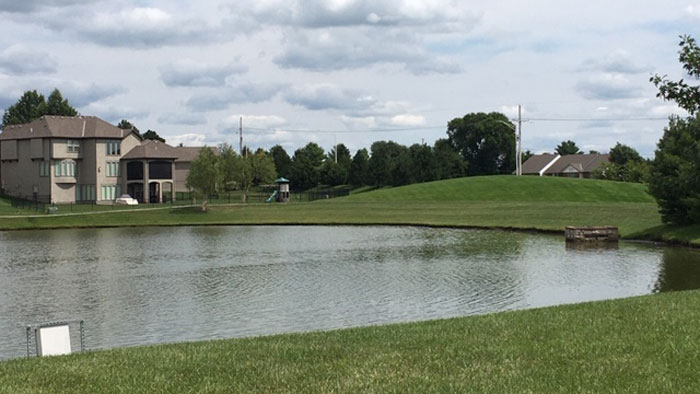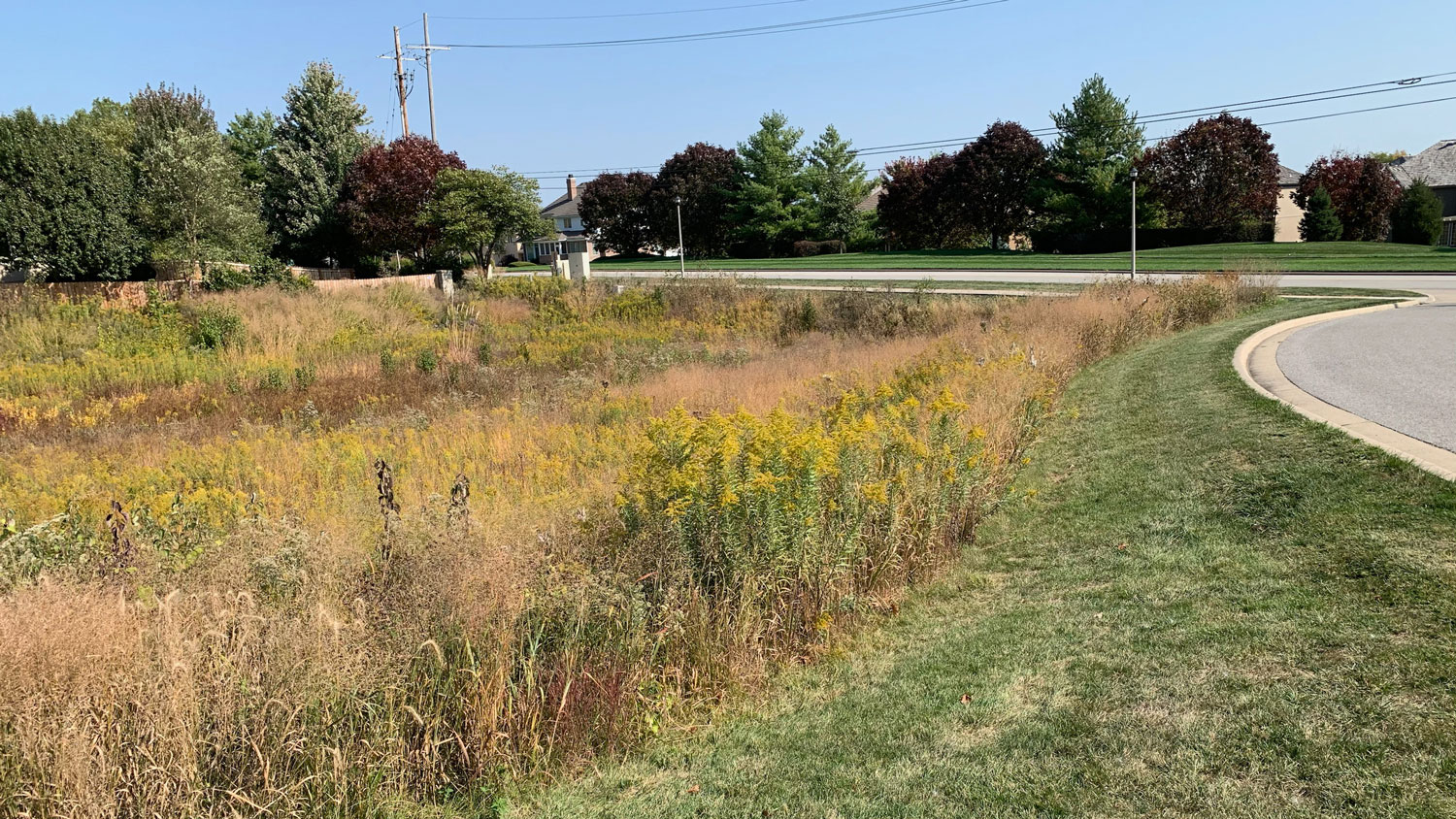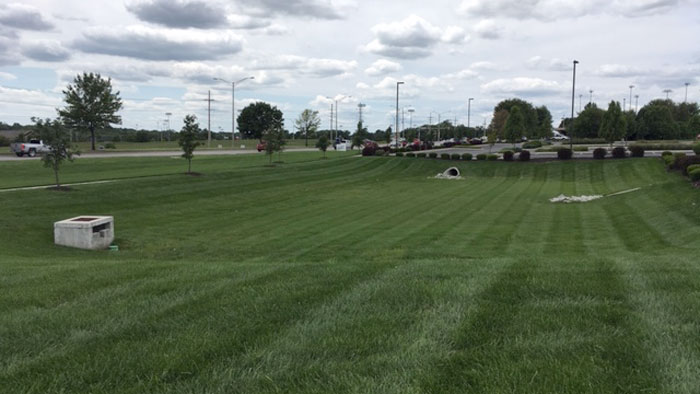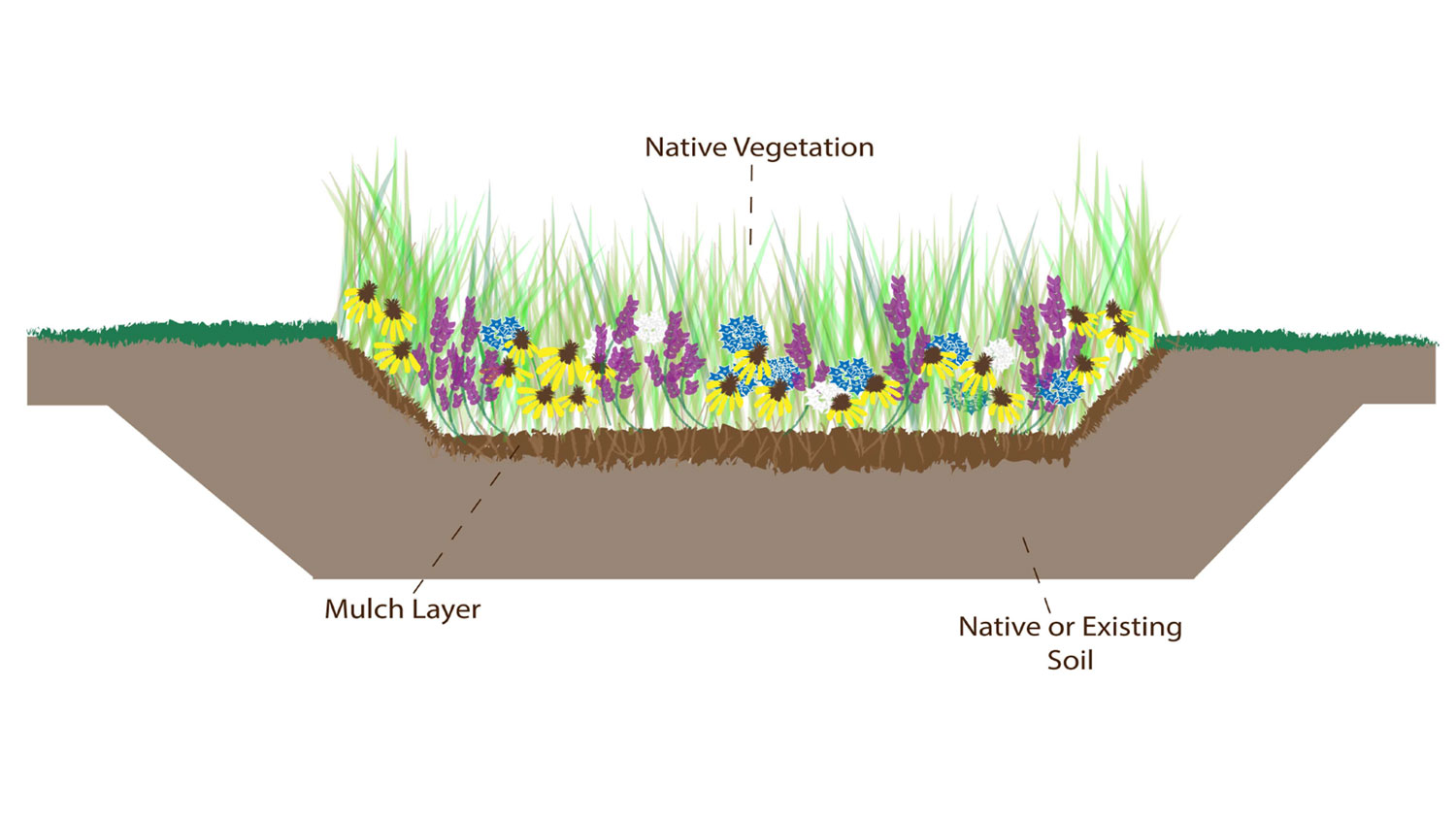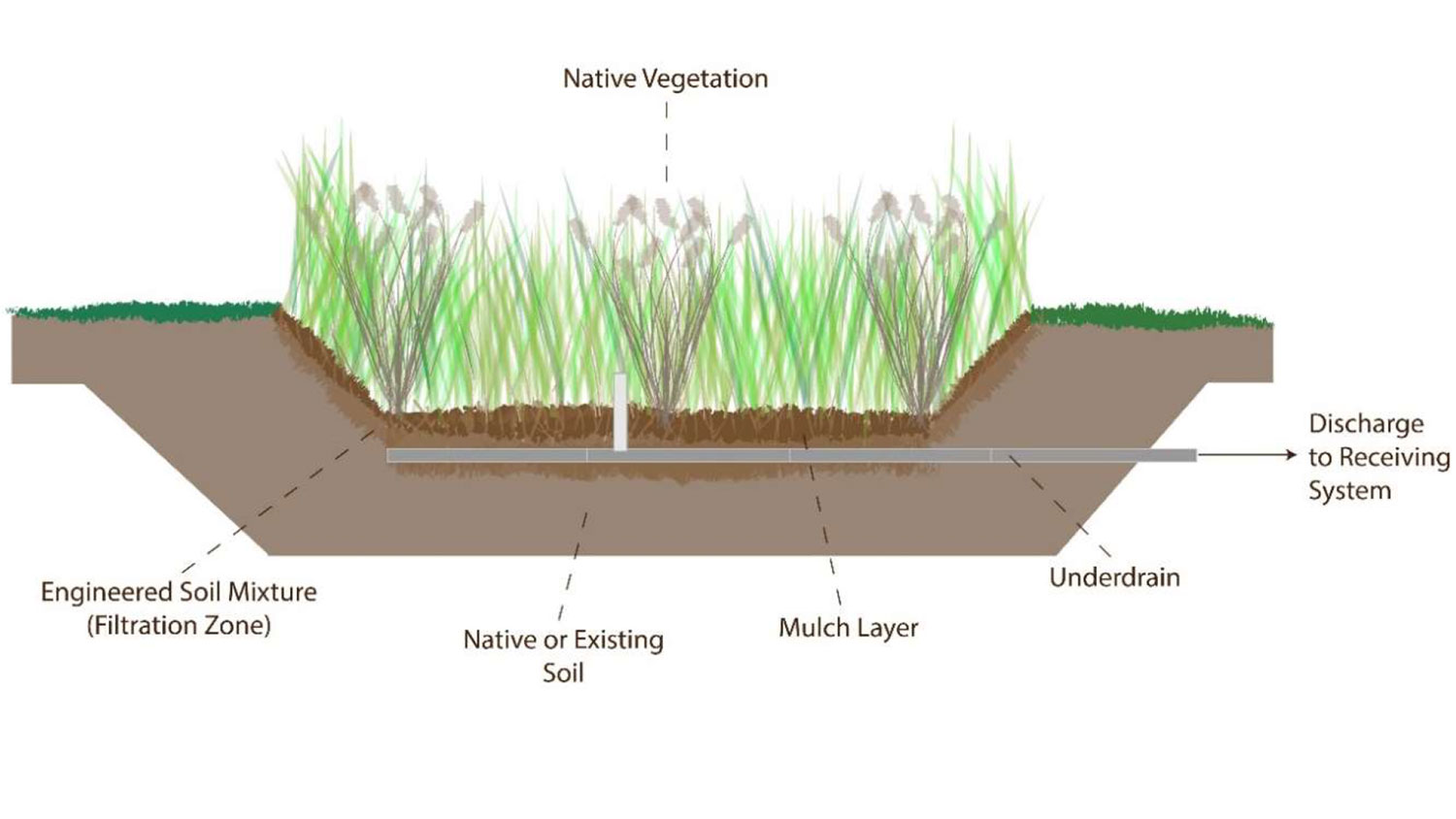Streams + Watersheds
Streams + Watersheds
Overland Park has more than 70 miles of streams and rivers. It runs through multiple watersheds.
A watershed is an area of land in which all water, including rainwater, drains to a common waterway, like a nearby creek, river or lake.
Homes and businesses in Overland Park are part of the Turkey Creek and Blue River watersheds. Camp Creek, Wolf Creek, Coffee Creek, Tomahawk Creek, and Indian Creek in Overland Park flow into the Blue River.
Report a Concern
Use OPCares, the City’s online customer service center to report a stormwater pollution issue.
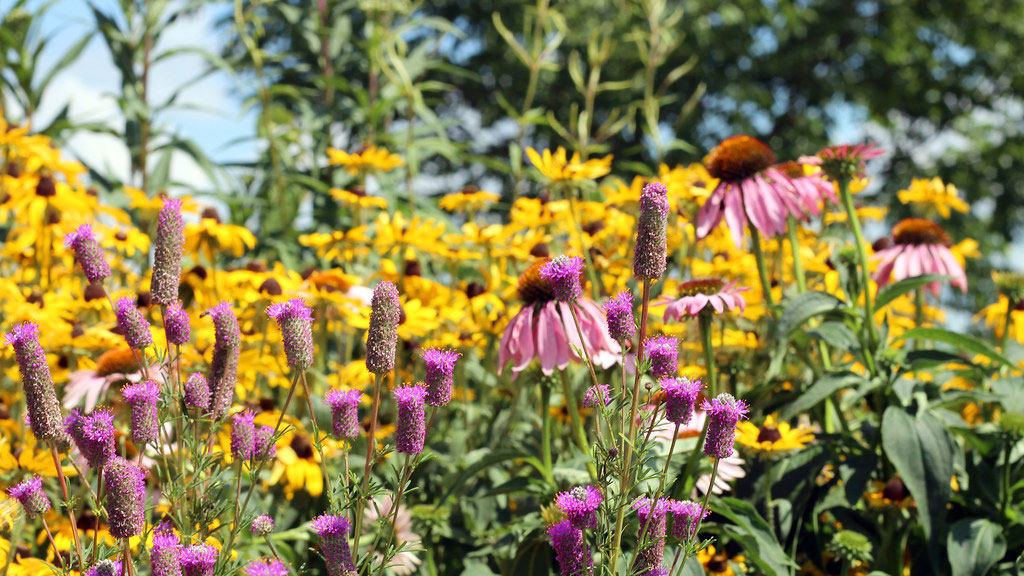
Healthy Yards
Taking simple steps in your yard can improve water quality. Help keep Overland Park’s landscape both beautiful and healthy by
- Get tips from Kansas Healthy Yards and Communities
- Managing yard pests and chemical applications with information from the Environmental Protection Agency
- Testing your soil with the K-State Extension Office for fertility and chemical and mineral makeup
- Planting native plants and trees
- Conserving water
- Composting
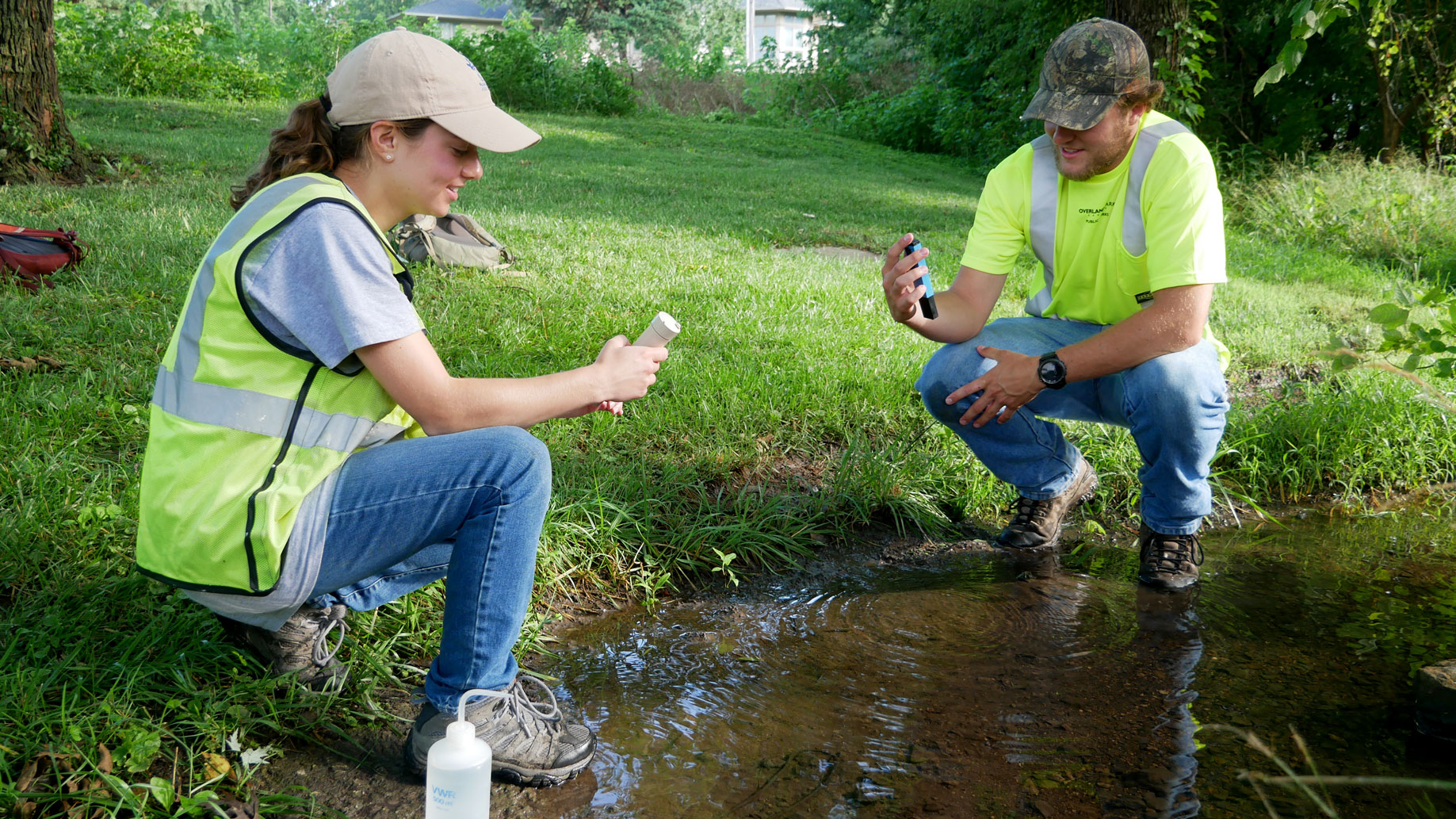
Stormwater Runoff
As stormwater runoff flows over land and impervious surfaces, it picks up sediment, contaminants, litter, nutrients, and other pollutants which then discharge, untreated, into the waterways within Overland Park.
Unmanaged stormwater could adversely affect these waterways by causing water pollution, stream bank erosion, and even flooding.
You can prevent stormwater pollution by following basic sustainability best practices around your home.
Natural Landscaping
Natural landscaping is the planned planting of prairie, woodland and wetland plants as an alternative to turf grass. It incorporates plant life native to our area, plants and flowers that existed here before turf grass lawns were introduced, that thrive with less traditional upkeep than is required of traditional landscaping.
Benefits
- Once established, native plants require little watering and upkeep, greatly reducing watering, fertilizing and mowing costs associated with traditional lawns.
- Natural landscaping improves water quality and prevents erosion, reducing the cost of stormwater
management. Established plants also reduce air and noise pollution. - Native plants provide diversity and habitat, supporting local birds and wildlife. Song birds, bees,
butterflies and other pollinators, all of which are beneficial, are supported by natural landscaping.
What To Expect
Native grasses may take up to five years to become fully established. The first fall after planting may appear unsuccessful, with sparse vegetation and abundant weeds. The second fall after planting there are scattered native grass seed heads here and there, and by the third season after planting a stand of native grasses begins to appear. By the fifth year, native grasses dominate with few weeds.
Maintenance
During establishment, mow natural landscaping twice a year, once in the late spring and early summer and again in the fall. This helps suppress weeds and controls woody brush, allowing the native plants to establish. Weed control is critical during this time, often requiring spot treatment with herbicides.
Once established, natives can out-compete most invasive species. You will generally only need to mow once a year to control woody brush.
Avoid mowing too frequently or mowing too short (less than 6-8 inches) as it weakens the native grasses and allows weeds to invade.
Types of Native Grasses
- Big Bluestem
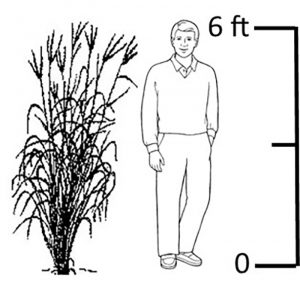

Andropogon gerardii
Height: 4.0 – 6.0 ft
Spread: 2.0 – 3.0
Light: Full sun
Moisture: Medium – Dry
Warm season, clump grass- Little Bluestem
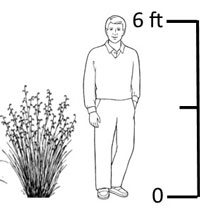
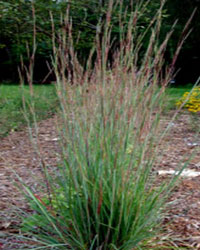 Schizachyrium scoparium
Schizachyrium scopariumHeight: 2.0 – 4.0 ft
Spread: 1.5 – 2.0 ft
Light: Full Sun – Light Shade
Moisture: Medium – Dry
Warm season, clump grass- Indian Grass
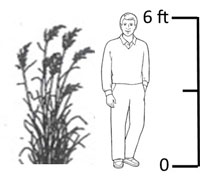
 Sorghastrum nutans
Sorghastrum nutansHeight: 3.0 – 6.0 ft
Spread (ft): 2.0 – 3.0 ft
Light: Full Sun
Moisture: Medium – Dry
Warm season, clump grass- Prairie Cordgrass
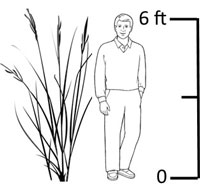
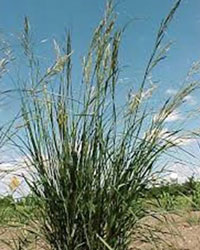 Spartina pectinata
Spartina pectinata
Height: 3.0 – 8.0 ft
Spread: 4.0 – 7.0 ft
Light: Full Sun – Light Shade
Moisture: Wet
Warm season grass, spreads rapidly by rhizomes- Switchgrass
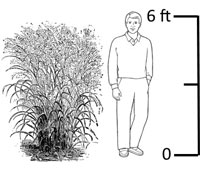
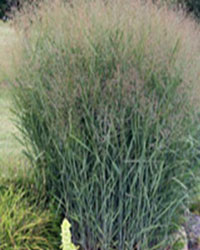 Panicum virgatum
Panicum virgatum
Height: 4.0 – 6.0 ft
Spread: 2.0 – 3.0 ft
Light: Full Sun – Light Shade
Moisture: Medium – Wet
Warm season, clump grass with
sod forming by rhizomes- Prairie Dropseed
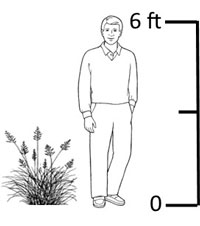
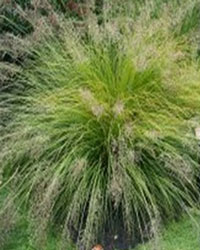 Sporobolus heterolepis
Sporobolus heterolepisHeight: 1.0 – 3.0 ft
Spread: 2.0 – 3.0 ft
Light: Full Sun
Moisture: Medium – Dry
Warm season, clump grass- Western Wheatgrass
Pascopyrum smithii
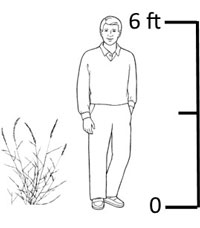
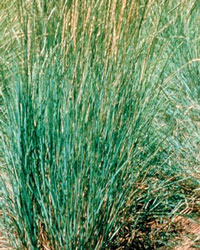
Height: 1.0 – 3.0 ft
Spread:
Light: Full Sun – Light Shade
Moisture: Medium – Moist
Cool season, aggressive sod forming- Side Oats Grama

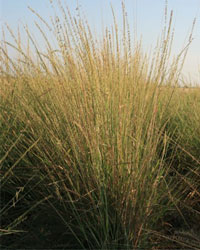 Bouteloua curtipendula
Bouteloua curtipendulaHeight: 2.0 – 4.0 ft
Spread: 1.0 – 2.0 ft
Light: Full Sun
Moisture: Medium – Dry
Warm season, clump grass, can be sod forming- Blue Grama Grass
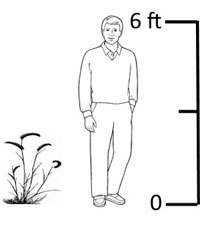
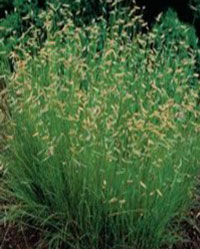 Bouteloua gracilis
Bouteloua gracilisHeight: 1.0 – 2.0 ft
Spread: 1.5 – 2.0 ft
Light: Full Sun
Moisture: Medium – Dry
Warm season, clump grass- More
Stormwater Basins, Ponds and Wetlands
Stormwater basins, ponds and wetlands are best management practices designed to reduce the impact of pollutants and increased stormwater on local streams caused by development.
Undeveloped land allows rain and snow to soak into the ground, evaporate or flow over land. When homes and other developments are built, the natural system of trees and plants over relatively porous soil is replaced with harder surfaces like streets, sidewalks, decks, roofs, driveways and lawns with compacted soil. Because of this, the ground soaks up less rain and more stormwater flows off the land at a quicker rate. This can lead to stream bank erosion within local streams and downstream flooding.
Stormwater flowing over developed land also contains higher levels of pollutants such as sediment, phosphorus and nitrogen from fertilizers, bacteria from pet waste and salts, and oil and grease from roads and parking surfaces.
Basins, ponds and wetlands near residential and commercial areas can create a beautiful environment for homeowners to enjoy and increase property value as a result. However, if they are not properly maintained, they can become unsightly and lose functionality.
Stormwater best management practices
- collect and detain stormwater,
- help slow the rate of runoff from the neighborhood,
- improve the quality of the stormwater,
- protect local creeks and private property and
- create wildlife and aquatic habitat.
Basins, ponds and wetlands should not be considered a cure-all for flood control or pollutant removal or associated problems. As individuals, we can all mitigate these problems by following basic sustainability best practices.
Types of Best Management Practices
Extended Detention Wetland
- Constructed basin with permanent pool that can catch additional runoff and release it slowly.
- Approximately 18 inches deep.
- Effective pollutant removal.
- Provides wildlife habitat.
Extended Wet Detention Basin
- Constructed basin with permanent pool for water quality treatment and additional capacity for temporary storage.
- Sometimes referred to as retention ponds or wet ponds.
- Allow pollutants and sediments to settle out of the water before discharging into another water body.
- Lowers peak runoff rates and provides flood control benefits.
- Generally 6 to 12 feet deep.
- Provides wildlife and aquatic habitat.
- Aesthetically more acceptable.
- May be aerated.
Extended Dry Detention Basin
- Constructed basin that provides temporary storage of runoff designed to hold water for a short period of time, then dry out. There is no permanent pool.
- Also known as dry ponds.
- Decreases stormwater runoff peaks.
- May have a narrow, concrete or rock channel from the inlet to the outlet for low flows.
- May contain mowed turf grass or native grasses and wildflowers for maximum pollutant removal.
- Allows sediment and pollutants to settle out to improve water quality.
Maintenance
Maintenance is key to longevity and functionality of stormwater basins, ponds and wetlands.
Poor maintenance can produce low water quality resulting in low dissolved oxygen, algae blooms, unsightly conditions and odors.
The longer a pond, basin or wetland exists, the more likely it is to create a nuisance due to poor or nonexistent maintenance. Stormwater basins, ponds and wetlands, whether they are located on a commercial or residential lot, are generally the responsibility of a business, individual homeowner, or homeowner association.
Proper maintenance includes:
- Sediment removal
- Management of vegetation including no-mow buffers
- Structure repair due to damage or clogging
- Erosion prevention and repair
- Trash removal
- Management of fertilizers and pesticides
- Managing pet waste removal
Frequently Asked Questions
- The basin never has any water in it. Is it working?
Likely, yes. An extended dry detention basin is dry most of the time and will only contain water for a short time after significant rainfall.
- Our pond smells bad and looks muddy. What can we do?
It may be in need of maintenance. Excessive sediment and nutrients can result in smelly, yucky ponds. Maintenance to remove these pollutants as well as preventing new pollutants is critical. Limit sediment by controlling erosion around the edges and any upstream sources. Limit the use of fertilizers and maintain an un-mowed, vegetative buffer around the pond.
- Why doesn’t our stormwater basin look like a regular pond?
You may have an extended detention wetland or an extended dry detention basin, which do not have deep, permanent pools of water like an extended wet detention basin.
- The vegetation looks weedy and unkempt. Can we remove it or mow it down?
Native vegetation around basins, ponds and wetlands as well as aquatic vegetation play a critical role in maintaining the health of the basins, ponds or wetlands. For a less ‘weedy’ look, consider lower growing species and adding wildflowers for color. Controlling woody and invasive species also provides a more uniform look.
- I'm worried about mosquitos. What can I do?
Proper maintenance is the answer.
A properly maintained basin, pond or wetland will support healthy vegetation and good water quality, therefore providing an undesirable habitat for mosquitoes. A well-maintained basin, pond or wetland also provides habitat for mosquito predators like dragonflies. Mosquitoes reproduce by laying eggs in still pools of water or on mud or fallen leaves. A few inches of standing water such in dry pond depressions, voids in riprap linings, or other inconspicuous places can become mosquito breeding areas.
- How can we control geese around our pond?
An unmowed vegetative buffer around the edges deters geese. Geese prefer regularly mowed grass to the edge of the water so they can see predators approaching.
- Our basin, pond or wetland is full of cattails. Is this ok?
Cattails are an introduced species that become invasive and choke out more desirable plants. Cattails are usually a sign of poor maintenance.
- The shallow bench around the edge is heavily vegetated and looks bad. Can it be removed?
The bench, known as a littoral bench, is part of the design. It is installed for safety reasons and to allow dense stands of desirable vegetation, keeping out undesirable plants like cattails. It also provides habitat for insects (mosquito control) and takes up nutrients to prevent algal blooms.
- Is algae bad?
Not all algae indicates a problem but algal blooms usually indicate an excess nutrient problem. Nutrient input from fertilizers or pet waste needs to be controlled to mitigate the problem.
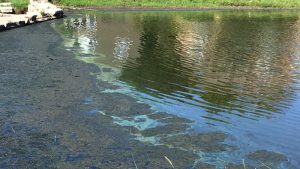
Establishing wetland vegetation within the basin, pond or wetland as well as a vegetated buffer around the edges will help improve water quality by filtering pollutants in the runoff.
This helps reduce algae growth within the basin, pond or wetland and in downstream rivers and streams. Reducing pollutants that may get to the basin, pond or wetland is important in protecting water quality. Excess nutrients, including nitrogen and phosphorus, encourage algae growth.
- Our subdivision has a series of lakes, but one is shallow and murky. Why does it look different?
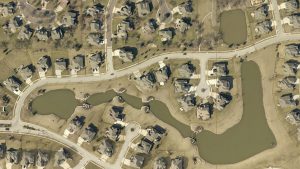
It may be a forebay, designed to catch sediment and pollutants before they enter the downstream lakes. In the photo to the right, the forebay for pretreatment is at the top right. It collects sediment and pollutants and allows for easier maintenance access. The extended wet detention basin is shown on the bottom half of the photo.
Rain Gardens + Bioretention
Rain gardens and bioretention cells are landscaped areas designed to collect and filter stormwater runoff through infiltration. Both are engineered ‘gardens’, requiring regular maintenance to work horticulturally as well as hydrologically.
Rain Gardens
A rain garden is a shallow excavated area planted with native prairie and wetland plants in existing soil. Using native plants with deep root systems in a rain garden helps to increase infiltration and filter pollutants. Rain gardens are most effective for drainage areas of less than one acre.
Bioretention Cells
A bioretention cell uses native vegetation and an engineered soil mixture to filter, uptake and infiltrate stormwater by natural processes. After filtering through the engineered soil matrix, stormwater that is not absorbed by the plants or infiltrated into the native soil below, is collected by an underdrain system that will discharge into a nearby storm sewer. Bioretention can be used for larger drainage areas, up to four acres.
Maintenance
Rain gardens and bioretention cells require maintenance just like any other type of garden. Proper maintenance includes:
- Regular weeding.
- Removal of invasive or undesired plants.
- Replacement of dead plants.
- Mulching to help plants establish and to suppress weeds.
- Prompt removal of sediment or other debris which may limit infiltration.
- Limiting compaction.
- Excluding the use of fertilizers.
- Limiting irrigation: properly chosen plants should not need additional irrigation once established.
During the first 3 years, as plants become established, it may be necessary to keep water levels low for small plants and irrigate during dry periods.
Frequently Asked Questions
- What kind of plants are allowed/not allowed?
Native, deep rooted perennials are needed to allow for infiltration and pollutant removal. Native perennials suited to the moisture conditions of the rain garden are generally long lived and tolerate harsher conditions. Consideration should also be given to aesthetics by choosing plants with colorful blooms or foliage, seasonal interest and that fit the surrounding landscape. Shorter, more compact plants are often more acceptable. Limiting the number of species simplifies maintenance and helps discern weeds from desirable plants. Any plant that is invasive or problematic is not allowed (examples: cattails, woody brush/trees, Johnsongrass).
- Do I have to replace dead plants with the same species?
Generally, yes. The designed vegetation is critical for function and performance. With poor vegetation cover and density, the rain garden or bioretention will not perform as intended.
- Who is responsible for maintenance?
For a subdivision, the HOA is generally responsible for rain gardens and bioretention located on community property. Individual homeowners and business owners are generally responsible if located on private property.
- Are rain gardens the same as wetland or bog gardens?
No, unlike wetland and bog gardens that have a permanent pool of water except during very dry conditions, rain gardens and bioretention should be considered ‘dry’ gardens with only brief wet periods. Properly functioning rain gardens and bioretention that infiltrate standing water quickly allow for a greater selection of plants.
- What should be done if standing water is present?
Rain gardens and bioretention are designed to hold water for 1-2 days. They may also be frequently inundated with repeated rain events. However, standing water beyond these conditions usually indicates maintenance to increase infiltration, clear an underdrain/overflow or remove excessive dead plant material, sediment or other debris.
National Pollution Discharge Elimination System
Water pollution degrades surface waters making them unsafe for drinking, fishing, swimming and other activities.
Overland Park minimizes stormwater runoff impact by implementing best management practices. These include:
- developing a stormwater quality management plan
- submitting an annual compliance report
- maintaining compliance with the national pollution discharge elimination permit requirements.


